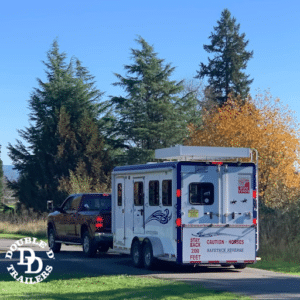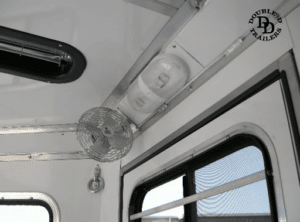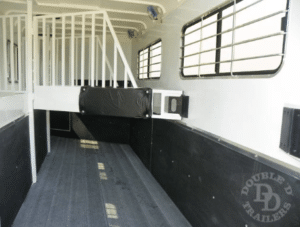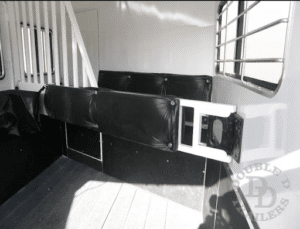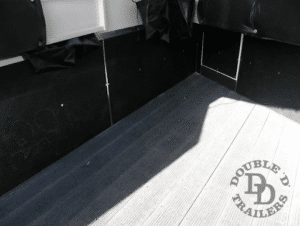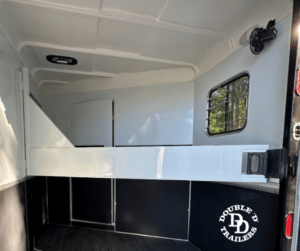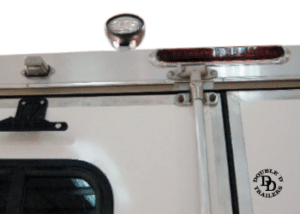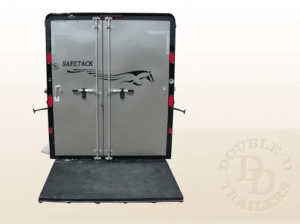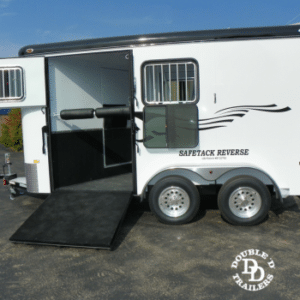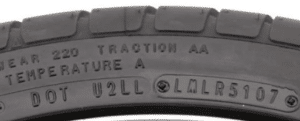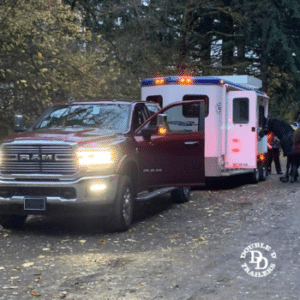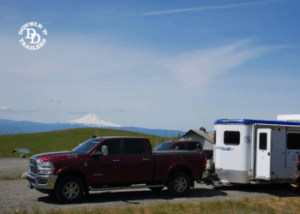Horse Trailer Safety Standards Guide: Ensuring Equine Welfare
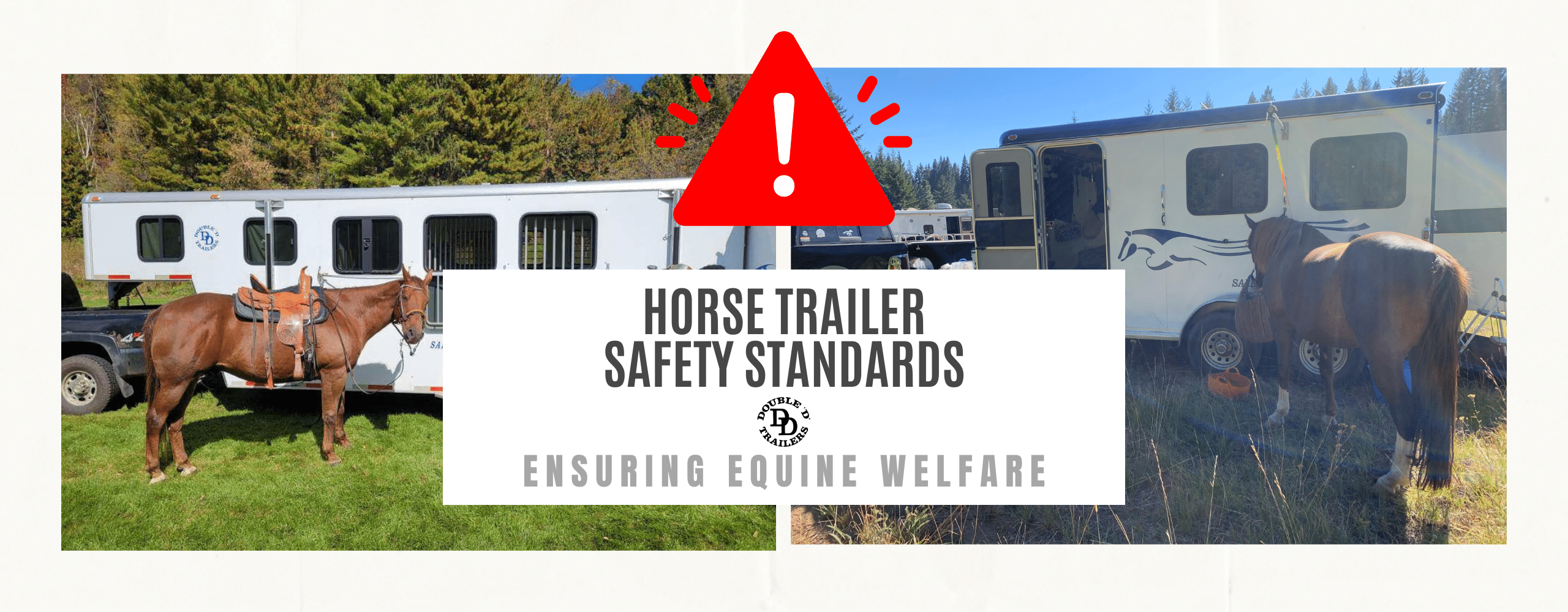
Trailering horses may seem like a straightforward task, but it takes a lot of planning and consideration of dozens of important factors, starting with safety. This is the primary concern related to equine welfare during transportation.
Learning all about the various horse trailer safety standards applicable today is crucial for choosing the ultimate trailer. By discerning the gold standard in equine trailer safety, potential pitfalls in various models become evident, equipping you to make informed decisions to avoid undesired compromises.
Understanding Horse Trailer Safety Standards
Modern horse trailer safety standards encompass extensive requirements and guidelines; all laser-focused on delivering the pinnacle of horse safety and comfort during transit. These regulations scrutinize every facet of a horse trailer, from its skeletal structure and sturdiness, innovative safety mechanisms, ergonomic design, optimal weight distribution, and load-bearing abilities to the design of escape routes and the strategic positioning of ramps.
9 Aspects of Horse Trailer Safety Standards and Their Importance
The broad range of horse trailer safety standards focuses on 9 aspects primarily, as follows:
- Structural integrity
- Ventilation
- Interior and stall space
- Roof, floor, and walls
- Non-slip flooring
- Partitions
- Lighting
- Loading and unloading access
- Emergency exits
1. Structural Integrity
A publication posted on Rutgers Equine Science Center’s website entitled “Horse Trailer Maintenance and Trailering Safety” by M. Margentino, K. Malinowski, S. Malone, and C. Williams mentions one of the worst-case scenarios related to equine transportation: a horse falling through the floor of a horse trailer due to compromised structure, most often caused by rust or corrosion. Any horse trailer’s structural integrity is the backbone of its performance, longevity, and safety rating. It entirely depends on a combination of factors:
- Design and engineering
- Fabrication methods and processes
- Combination of materials
- Material processing and testing
The above factors determine if a horse trailer is safe, but even the toughest model out there still requires regular maintenance according to the maker’s recommendations, alongside frequent inspections and detailed cleaning of the interior, exterior, and undercarriage after use.
While these elements construct a trailer's safety DNA, the long-term safety assurance demands diligent upkeep. Abiding by the manufacturer's maintenance protocols, punctuating its life with periodic assessments, and ensuring attentive cleansing of its interiors and exteriors post-use, will guarantee its enduring performance and safety standards.
2. Ventilation
No matter how seasoned a horse is with traveling, the potential risks of dehydration, stress, fatigue, and other transportation-related ailments remain. The antidote? Thoughtful ventilation. A well-ventilated trailer is more than just an airy box; it's a sanctuary where horses can find comfort even on the longest journeys.
Depending on the horse trailer’s size, there can be one or several roof vents. Their productivity should be calculated correctly in order to cope with the space inside the horse area. The best horse trailers typically boast fans inside the vents that suck out the stall air and replace it with fresh one, thus providing horses inside with a cooler and safer environment with adequate humidity and air quality. Additionally, ventilation can be enhanced by window hatches designed to incorporate screens, thus allowing massive airflow during movement while protecting horses from debris.
3. Interior and Stall Space
When it comes to horse trailers, one size does not fit all. The diversity in horse breeds, sizes, and temperaments necessitates trailers that cater to these unique specifications. The significance of a spacious interior isn't just a matter of physical comfort—it plays a pivotal role in the psychological well-being of the horse as well. Horses, by nature, are wary of tight, constricted spaces; their natural instincts could manifest in unpredictability when constrained.
Horses are prone to conflicts with each other when too close or when not divided properly, according to the scientific research on “Effects of Transport Conditions on Behavioral and Physiological Responses of Horses'' by B. Padalino and S. Raidal, published on the National Library of Medicine’s website. They can also shake their heads violently and show other signs of stress that could cause injuries. Therefore, sufficient stall space is a must-have when equine safety is a priority.
4. Roof, Floor, and Walls
When analyzing the core structure of a horse trailer, three integral components rise to prominence: the roof, floor, and walls. These aren't just barriers to the outside world; they play a vital role in ensuring both protection and comfort for the horses during transit.
The walls should be both padded to prevent bruises and scrapes and insulated to support climate comfort inside the horse area. They must also be as less heat-conductive as possible and strong enough to endure a horse kick. This is also valid for the roof, which should be lightweight yet sturdy. A horse trailer floor must be rigid and flexible to support horses’ weight and also rust-proof to guarantee longevity. The floor must also be as even as possible, with no obstacles and obstructions where a horse could trip and fall down. Together, these three structural elements combine to create a cocoon of safety, ensuring that the horse's journey is both secure and serene.
5. Non-slip Flooring
There are several types of horse trailer flooring materials that are most commonly used today: aluminum, wood, rubber, and composites. Aluminum floors bend and corrode, not to mention how slippery they can get when wet. Wood is a better choice because it provides more grip and some additional insulation, but it’s also prone to rotting away and getting damaged. Floor mats are a great choice and they’re a common solution, but using specialized materials such as Rumber flooring (tongue and groove rubber-composite flooring boards) could be equally good, as it provides a non-slip, long-lasting finish.
6. Partitions
Horse trailer partitions come in all shapes, types, and sizes. Dressing and tack rooms, for example, are separated from the main horse area via dividing walls (which can be mobile or swing-out) and doors. Inside the horse area, the list of partitions (ideally adjustable) includes stall dividers, chest bars, butt bars, head dividers, and other pieces of equipment, all of which need to be strong and designed to prevent injuries and ensure comfort for the horses. A twisted divider or a damaged dressing room wall can both cause injuries. Also, partitions should not prevent horses from standing in a natural position.
7. Lighting
For horses, the confines of a dim, tight space can be unsettling. Ensuring adequate lighting in a horse trailer—both natural and artificial—is essential for their well-being during transit. Light helps horses feel calmer during loading and transportation, as confirmed in research conducted by C. Neveux, MSc, and described by C. Lesté-Lasserre in an article published on TheHorse.com.
8. Loading and Unloading Access
There are primarily two types of horse trailer access: ramps and step-ups. While ramps are generally deemed more convenient and safer, it's not a one-size-fits-all solution. There are a couple of horse trailer loading and unloading types: ramps and step-ups. Ramps seem to be the more practical and a safer choice, but that’s not always the case. The best industry standards suggest that a loading/unloading ramp should be wide enough for any horse breed, and it should also feature a non-slip surface. Horse trailer ramps should not be too heavy because they would otherwise add a lot of weight to the trailer, not to mention they would be a burden for a horse owner to lift and maneuver. Step-ups can be a bit of a challenge to use by some horses because of higher thresholds, but this depends on the horse’s training, age, and condition. Either configuration should represent a safe access point, and in cases where there is more than a single ramp or door, they need to be strategically placed to enhance loading/unloading and to allow horses to travel in the most appropriate position.
Double D Trailers ramps are unique: they are easy-to-lift and mounted at a lower pivot point. This results in easier loading/unloading for both horse and handler, as well as decreased risk of leg injury for your horses.
9. Emergency Exit
Every horse trailer should feature an escape route. This is crucial for the safety of both horses and humans. In case of an accident, the emergency exit door might be the only way out, meaning that it could be a life-saving feature that should be never neglected. In trailers with side loading ramps, emergency exits are usually located opposite them. Designed for quick evacuations, these exits are spacious enough to facilitate a hasty exit for both horses and handlers.
Double D Trailers side ramp option adds another means of escape in the case of an emergency.
Information Labels and Other Minimum Standard Requirements
Every vehicle licensed to be manufactured, sold, and registered for use within the U.S. must comply with dozens of rules, regulations, requirements, and restrictions issued by federal law. This includes horse trailers, too. There could be variations in legislation across different states, but the rules are generally equal.
One of these requirements is related to client information: any vehicle must be equipped with labels and placards, providing the vehicle owner with the information needed to operate and maintain it safely. Differences may be noted depending on the type, size, and weight of the trailer, and the same goes for other aspects of owning a horse trailer, such as licenses, permits, and registration – those can also vary between different states. But for the sake of outlining only horse trailer safety standards, we’ll focus on the most important among them.
Trailer Tire Size
Horse trailer tire size is a top priority when it comes to handling, stability, and overall road safety. The appropriate tire size of a particular horse trailer depends on its weight, load capacity, number of axles, and, most importantly, the GVWR (Gross Vehicle Weight Rating). The latter requires a specific tire size and type that could handle the rig’s weight. Typically, all tire-related requirements and recommendations are explained on a decal or placard placed on the trailer or vehicle. Inflating tires correctly and following the manufacturer’s instructions ensures the safety and comfortable ride of the trailer. Improper tire size, type, and tread, as well as under-inflating them, can jeopardize the trailer’s stability and braking power, thus increasing the risk of accidents.
Load Capacity
The load capacity of a particular horse trailer depends on the following factors:
- Manufacturer
- Size
- Type
- Design
- Floorplan
When you take the GVWR (Gross Vehicle Weight Rating), subtract the weight of the trailer, and add back in the tongue weight, you get its carrying capacity as a result. This would include the capacity for horses, tack, and equipment. No two trailers have the same load capacity. Two seemingly similar gooseneck trailers, for example, can have the same length and width, but one may have a better load capacity than the other because it doesn’t feature living quarters and other options that add to its weight.
The load capacity of a horse trailer is tightly related to the tow vehicle you intend to use and its characteristics. Besides the GVWR (Gross Vehicle Weight Rating), here are a couple more indicators to consider, as follows:
- GCVWR (Gross Combined Vehicle Weight Rating): This number stands for the maximum combined weight of the horse trailer and tow vehicle (both fully loaded).
- GAWR (Gross Axle Weight Rating): This is the maximum weight allowed to be put on the axles of your tow vehicle.
Hitches and Tow Balls
A horse trailer hitch comprises several components, as follows:
- Coupler
- Safety chains
- Breakaway system
- Drawbar
- Hitch ball
- Coupler
These components serve the purpose of joining the tow vehicle and the trailer safely and efficiently, ensuring safe and efficient coupling while promoting stability and maneuverability. They can vary in size and type, so you must select them to suit both the trailer and tow vehicle. Regular inspections are vital to ensure all components function correctly. This is especially important given the stress, wear, and potential for rust and mechanical failures that trailer hitches face. Miscalculations of the tow hitch elements, poor maintenance, flimsy installation, and other issues might lead to a road accident, thus putting both horses and humans in danger. One of the primary mistakes some people make is choosing the wrong tow ball in diameter. If it’s too small, the trailer can easily pop off.
Regardless of the specific type and components, a hitch is always rated by manufacturers based on several factors and requirements. All the latter should be found on a placard that states the maximum tongue weight, the gross trailer weight, weight distribution, and so forth. While the weight ratings vary from 2,000 to 20,000+ pounds, what’s crucial is to have the right setup. There are six hitch classes available, and the most popular hitch setups for horse trailers fall into the third and fourth categories, which have weight-carrying ratings of 5,000 and 7,500 pounds, respectively.
Check Your Bumper Pull's Tongue Weight Here
Brakes and Wheel Bearings
In over 30 states across the U.S., horse trailers with a GVW (Gross Vehicle Weight) of 3,000 pounds or more must be equipped with brakes. If a fully equipped and loaded trailer weighs that much, it should be able to stop under its own braking power. This means that almost all horse trailers fall into this category, therefore, they need brakes.
There are exceptions where trailers that are on the weight limit or slightly over it. Depending on the jurisdiction and trailer size and class, it could be acceptable for the trailer to have brakes only on one of its axles. However, regardless of any requirements and laws, it’s always better to choose a trailer with a braking system, complete with an emergency electric breakaway system (which is the last stopping option in case the trailer’s brakes fail and the coupling safety chance don’t manage to keep it attached to the towing vehicle). Otherwise, even the lightest horse trailer would put the brakes of the towing vehicle to the test every time hard braking is required due to various road situations.
It’s better to play it safe, and that goes for maintenance as well. The brakes and bearings of a horse trailer are critical elements of a horse trailer’s safety. If they fail, the result could be disastrous. To avoid such a situation, you need to inspect and service the braking system regularly, alongside the hub bearings, and the axles of the trailer following the manufacturer’s recommended maintenance intervals.
Safety is top priority at Double D Trailers. All of our horse trailer models are equipped with responsive brakes and adequate safety systems.
Horse Trailer Breakdown Coverage
Despite all safety precautions, proper maintenance, and frequent inspection, you could still experience a technical fault or an accident that can leave you stranded somewhere. Being stuck on the side of the road is a scenario you can avoid by having insurance, preferably with horse trailer breakdown coverage.
Investing in this type of insurance brings about several advantages:
- Recovery Services: With insurance, the responsibility of recovering your trailer rests with the insurance provider, offering peace of mind.
- Roadside Assistance: For minor inconveniences such as a flat tire or engine trouble, roadside aid can be invaluable.
- Travel and Accommodation Support: If your breakdown leaves you stranded far from home, some insurance policies will cover your accommodations or even your return journey expenses.
These and more options depend on the type of coverage you opt for and its scope. There are plenty of insurance companies offering nationwide coverage and services. Possible restrictions may apply, such as requirements for your tow vehicle’s insurance. Also, insurance rates always vary depending on your trailer’s technical condition, age, type, and gross weight.
In legal terms, horse trailer owners and operators have several obligations, some of which we have gone through in this guide so far. For legal clarity and to ensure the safety of all involved, horse trailer owners must be aware of their responsibilities. Among these are:
- Manufacturer/Dealer Guidance: Upon purchasing a horse trailer, you should receive essential technical data, including care recommendations, inspection guidelines, and maintenance schedules.
- Local Regulations and DMV: Regularly consulting local authorities or the DMV ensures you stay compliant with current laws and regulations.
>> READ OUR COMPREHENSIVE GUIDE ON HORSE TRAILER LAWS
All the above is required if you want to reinforce the impact of horse trailer safety standards and benefit from them. The same goes for horse trailer makers: when they implement even the basic horse trailer safety standards, the result always comes down to maximum safety, improved quality, and a low risk of unforeseen problems.
The Impact and Application of Horse Trailer Safety Standards
Horse trailer safety standards’ importance to manufacturers and clients is different but equally significant. For manufacturers, abiding by these standards is essential. They must ensure every aspect of their product, from design to final construction, adheres to the prescribed safety benchmarks, ensuring the welfare of the horse, the handler, and other road users. Meeting these standards not only safeguards their reputation but also promotes trust amongst potential clients.
For customers, on the other hand, understanding and valuing these standards is about making informed decisions. When purchasing a new or second-hand horse trailer, a deep dive into the technical specifications and adherence to safety norms becomes vital. This means examining every facet of the trailer: from its tire size, the sturdiness of partitions, the efficacy of the brake system, to the type of towing hitch. Furthermore, it’s essential to be aware of and comply with the necessary licenses and permits to legally tow the trailer.
The Impact of Horse Trailer Safety Standards on Horse Welfare
The horses’ well-being during transit is always a prime concern. Such consideration includes the following:
Road safety: A horse trailer's fundamental requirement is its roadworthiness. It must be easily maneuverable, balanced in weight distribution, resilient yet flexible in structure, and proportionally designed. Regular maintenance and a fortified arsenal of braking and safety features further mitigate the risks of mechanical failures. Together, these measures ensure a gentle journey for the horses, optimizing handling, and providing crucial protection during unforeseen incidents.
Comfort: It's not just about the journey; it's about ensuring the horse enjoys it. A horse trailer should be a sanctuary for equines and their human companions, translating to ample interior space, effective ventilation, adequate lighting, insulation, padded walls, skid-resistant floors, sturdy dividers, robust ramps, and secure tie rings. Such features aim to minimize equine stress by allowing freedom of movement and offering a serene environment.
To ensure the well-being of horses during transportation, you should make sure that both your trailer and tow vehicle comply with all relevant standards, as follows:
Spacious and Structurally Secure Environments: The standards necessitate a sturdy and roomy trailer design. This ensures that the horses have ample space to stand in a natural position, minimizing the risk of injuries from cramped spaces or sudden movements.
Proper Ventilation: Proper ventilation ensures a consistent supply of fresh air, helping to reduce stress and prevent respiratory issues. This is vital, especially on longer journeys.
Routine Inspections and Maintenance: Regular inspections as per the safety standards ensure that every part of the trailer, from brakes to hitches, is in optimal condition. A well-maintained trailer reduces the risk of sudden breakdowns, ensuring a smoother ride for the equine occupants.
Local Legislation Compliance: Adhering to local laws related to weight limits, towing capacity, and required permits ensures that the trailer is operated within safe parameters. Overloading or towing beyond a vehicle's capacity can lead to dangerous situations on the road.
Easy Access: Having doors and ramps that are appropriately sized and positioned, along with non-slip flooring, minimizes the risk of injury during loading and unloading. A horse that can easily walk in and out of the trailer will also be less stressed.
>> READ MORE: THE MOST ESSENTIAL HORSE TRAILER SAFETY FEATURES AND THE MOST DANGEROUS ONES
The standards that outline all these aspects ensure equine welfare during hauling. Keeping up with those standards means that horses will be comfortable and safe from harm. Let’s see how the horse trailer safety standards apply in real-life scenarios.
Application of Horse Trailer Safety Standards in Real-Life Scenarios
Horse trailer safety standards have various positive effects on horses’ welfare, and they don’t only come down to transportation itself. Trailer-training a horse, for example, depends on numerous safety standards. As stated in a publication by Prof. D. Meadows and Prof. J. Henton posted on The University of Tennessee Agricultural Extension Service’s website, the horse stall should be padded, spacious, well-lit, and divided using the right means to accommodate a horse that’s getting inside a trailer for the first time. Such features that meet the current safety standards prevent injuries if the horse shows erratic behavior or panics.
Consequences of Overlooking Horse Trailer Safety Standards
One cannot underscore the significance of adhering to horse trailer safety standards. Beyond the obvious hazards such as accidents or breakdowns, non-compliance or ignorance can result in several detrimental consequences:
- Equine Distress and Injury: Trailers not maintained as per safety standards can cause distress and potentially lead to injuries for the horses. For example, a poorly ventilated trailer can lead to respiratory problems, while an unpadded stall can result in bruises or abrasions during transport.
- Financial Implications: Accidents or mechanical failures due to overlooking safety standards can lead to hefty repair costs, both for the trailer and the tow vehicle. In addition, if an injured horse requires veterinary care, the expenses can escalate quickly.
- Legal Consequences: If one fails to comply with the safety standards and state regulations, they could face penalties, fines, or even a lawsuit in the event of an accident. This could also affect insurance claims and premiums.
- Reputation Damage: For businesses involved in horse transportation, compromising on safety can lead to severe reputational damage, which can affect future business prospects.
- Delay and Inconvenience: A breakdown or accident due to a lapse in safety can cause significant delays. This not only affects the journey plan but also disrupts other scheduled activities, be it a competition, a show, or a sale.
- Psychological Impact on Horses: Repeated bad experiences in substandard trailers can lead to horses developing a strong aversion to trailers in general. This makes future travels challenging and time-consuming.
The Evolution of Horse Trailer Safety Standards
The journey of horse trailer safety standards is a testament to the ongoing commitment to improving the welfare of horses during transportation. Over time, as the design and functionality of horse trailers evolved, so did their safety features. A combination of real-world accidents and their subsequent analyses paved the way for manufacturers and regulators to create more secure trailers.
Horses can habituate extremely fast, which is the key to successful horse transportation. Horse trailer safety standards emerged to help them cope with the obstacles they face during hauling: changes in temperature, humidity, and air quality, exposure to conditions that generate stress-related conditions, injuries during transportation or in case of an accident, and more. As the equine industry grew in size and diversity, there was a pressing requirement to make horse transportation safer and more efficient.
With the introduction of aluminum and composites as building materials, horse trailer safety standards evolved: trailers became lighter, longer-lasting, more comfortable, and resistant to impact. This was needed due to the increased speeds on public roads and highways, the continuously heavier traffic, and, most importantly, the growth of the equine industry in all its aspects and divisions.
One of the most significant changes in legislation in recent years related to horse trailer safety was the Horse Transportation Safety Act. It stands for the amendment of the US Code’s Title 49 that ensures humane treatment of horses on roads and highways. It banned the transportation of horses in motor vehicles containing two or more levels.
Advancements in technology have further augmented these safety standards. Modern trailers now often incorporate improved suspension systems for smoother rides, built-in camera systems for real-time monitoring of horses, advanced ventilation systems to ensure optimum air quality, secure latching mechanisms, and adjustable dividers to cater to individual horse needs. The focus on safety is further highlighted by the integration of features like anti-slip flooring and emergency exits.
However, while progress has been remarkable, there are still challenges to address. Harmonizing safety standards across different states remains an issue. And with the rapid technological advancements in other vehicle sectors, there's potential for even more cutting-edge safety features in horse trailers in the near future.
As we move forward, the role of all stakeholders – authorities, manufacturers, and horse owners – remains vital. Their collective input and collaboration will determine the trajectory of horse trailer safety standards, ensuring that the primary focus remains on the welfare and safety of the horses and their handlers.
Understanding Legal Obligations Related to Horse Trailer Safety Standards
Horse trailer makers and dealers are not allowed to manufacture, sell, and deliver trailers that do not comply with all applicable production and safety methods that are currently valid and do not possess certification for any of these activities. Every trailer must have a VIN (Vehicle Identification Number) placed on a placard, and it should be properly certified for production based on descriptive information provided by the manufacturer. Manufacturers and dealers are also obliged to provide their clients with detailed user and service manuals containing information about how to operate and maintain the trailer. Violations are subject to hefty fines. In case there are alleged or proven safety standard disruptions based on claims, complaints, or malfunctions, the manufacturer needs to retain all the information about such cases.
Horse Trailer Safety Travel Checklist
The important safety travel inspections before each departure shape an important checklist, as follows:
- Horse Trailer Inspection
A thorough examination of your trailer's technical components, such as the hitch, safety chains, lights, latches, wheels, and electrical system, is a must before hitting the road.
- Cleanliness Check
Hygiene is paramount. Ensuring a clean interior eliminates potential horse hazards like debris, while a clean undercarriage ensures the optimal functioning of the wheels and brakes. A clean trailer also reduces the risk of rusting.
- Equipment Audit
Beyond the trailer's structural condition, ensure it's armed with essential tools and emergency gear: a properly inflated spare tire, jack, toolkit, additional ties, warning triangle, fire extinguisher, and more.
For pre-trip tow vehicle safety tips, get your checklist here: Best Safety Practices Before Towing Your Horse Trailer
Prioritize Horse Trailer Safety Standards for Ultimate Equine Welfare
The safety of our equine companions during transportation remains the topmost priority for all involved - from the manufacturers to the horse owners. As technology evolves and materials improve, so do the standards and designs of horse trailers.
Understanding the importance of horse trailer safety is not enough. As a horse owner, you should know how a trailer complies with the latest industry and federal standards and make sure you and your trailer adhere to them. Some manufacturers put all their effort into creating designs wrapped around the idea of safe, lightweight, durable, and comfortable trailers. This is the only way to guarantee equine welfare.
Thanks to new ideas, materials, and innovations, horse trailer safety has become more advanced. In the meantime, new regulations and manufacturing standards may emerge. Hence, staying informed and engaged with the latest developments in horse trailer safety is the key to ensuring the welfare of your equine partners during transit. The journey to equine welfare is ongoing, and with dedication and continuous learning, we can all play our part in it.

